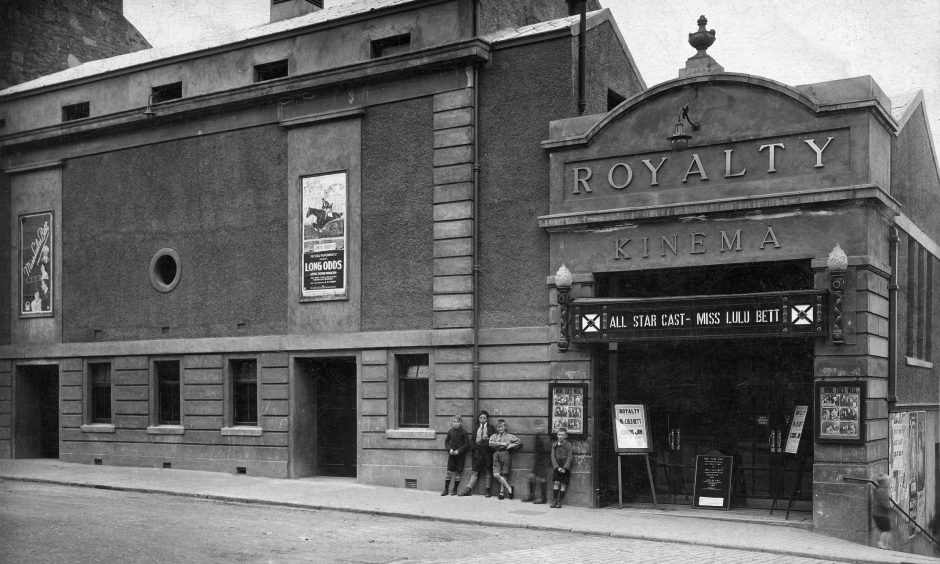
The Royalty Kinema had an unusual name to stand out from the crowd and was described as “Dundee’s finest district cinema”.
Previously the Edenbank Picture House stood in Watson Street.
It was opened by John Spink in 1910.
Dundonians were glued to the screen in the days when Charlie Chaplin was the king of comedy and Mary Pickford was known as the queen of the movies.
The Edenbank Picture House submitted plans for a new building in August 1919.
The cinema was to be built on a vacant site just along the street.
It was designed to hold 1,000 people.
The unfinished cinema was auctioned off
Work started in Watson Street at the junction with South Baffin Street.
Everything seemed rosy in the garden.
Trouble was looming.
Construction was “temporarily suspended”.
The cinema company was experiencing severe financial difficulty.
It appointed a liquidator to sell its assets and pay off its debts.
The Courier said: “About £6,000 has already been expended on the building, which will be sold as it stands and can be completed at comparatively small cost.
“This is an unique opportunity of acquiring a first-class picture house in a populous locality at a very low figure.”
A liquidation auction took place on December 23 1921 with price set at £2,500.
There were no takers.
The price was dropped to £1,500 on January 13 1922 to “induce competition”.
It still didn’t sell.
It was third time lucky when the price was “greatly reduced” to £1,000.
Construction work started again on site.
Why was Dundee cinema called the Royalty Kinema?
In his book, Dundee Cinemas: A Personal Account, Denis Naulty said the cinema was reputedly built on the site of the garden of the mill-owner Baxter’s mansion.
Mary Shelley stayed with the Baxter family before writing Frankenstein.
The grand opening took place on December 4 from 6.30pm to 10.30pm and promised the “latest and most up-to-date pictures at popular prices”.
It was called the Royalty Kinema to “attract more notice and patrons”.
Admission was 6p for front stalls, 9p for rear stalls and a shilling for the balcony.
It was the “premier suburban picture house” for “comfort and courtesy”.
There was seating for 835 people.
Every seat was close to the huge screen.
There was a children’s matinee at 2pm every Saturday.
The Royalty Kinema was a short walk from the tram stop at Baxter Park.
Among the first movies was the silent Western film Where Men Are Men.
After the horror of the First World War, cinema-goers wanted pure escapism, flocking to see weekly cliff-hangers or comedians like the Keystone Kops, Charlie Chaplin, Buster Keaton and the other Hollywood greats.
Every cinema had its orchestra.
The movies were just one part of the show.
Royalty Kinema made history with talkies
The Royalty Kinema was managed and then owned by the Pennycook family, regarded as the city’s pre-war picture house moguls.
They also owned Morgan Street Cinema and the Cinerama in South Tay Street.
They installed sound equipment.
The real golden age of cinema came with the development of the “talkies” in 1927 and the subsequent boom in the construction of new cinemas in the 1930s.
John Pennycook introduced talking films to Dundee for the first time.
The Royalty Kinema, along with the Cinerama and the Rialto in Lochee, simultaneously showed a programme of eight short talkies on March 29 1929.
It was a somewhat diverse collection.
“Armistice Day 1928” was alongside a “humorous burlesque” and a “cartoon”.
The Courier said: “If numbers are to be taken as any criterion the innovation met with spontaneous success.
“At each theatre large queues formed.
“Packed houses gave the talkies a good reception.
“When the raw edges, so to speak, have been rounded off, talkies, will no doubt find a permanent place in the programme of most of the Dundee picture theatres.”
Some months later, in the week beginning July 1 1929, the first feature talking film, Lucky Boy, starring George Jessell, was shown in the same three cinemas.
Now the public could hear their stars talk and sing.
The orchestra played a funeral march
The talkies at the end of the 1920s were the sensation of the silver screen.
The queues would snake round the block.
One result of the boom in talking pictures was the wholesale dismissal of orchestras, whose music was once billed as an important part of the show.
The Dundee Film Society sought to extend the boundaries of cinematic language.
They screened German and Russian films at the Royalty Kinema from 1930.
But not all films were foreign.
A short film made to celebrate the opening of the Constitution Road tram line in 1902 was shown by permission of William Pennycook, who was the manager.
So popular were the movies that people in the 1930s started booking seats.
In fact, during the depths of the Great Depression, making movies and building cinemas was the only growth industry in the country.
Frankenstein screening became famous
The Royalty Kinema was one of the first places in the world to screen the Boris Karloff movie Frankenstein in 1931, which was based on Shelley’s 1818 novel.
The “Frankenstein Steps” remain standing to this day in South Baffin Street.
Were they named after Shelley’s stay in the now-demolished Baxter mansion?
Or does the name only go back as far as 1931?
Broadcaster and Shelley expert Billy Kay said it was an “amazingly fey and undoubtedly Gothic coincidence” and both interpretations were “feasible”.
At the peak of film-going there were 25 cinemas in Dundee.
People would get dressed up.
Going to the pictures was what everyone did at least once a week.
It was the golden age of Hollywood.
The entrance to the Royalty Kinema was decorated with still images and colour photographs of the great stars featured in the films showing that week.
The Royalty Kinema was sold to cinema magnate John Bannerman Milne in 1959.
The place was given a fresh lick of paint to restore its movie magic.
The cinema’s popularity declined from the 1960s.
It was starved of customers, who preferred to watch television at home.
It was purchased by Dundee Corporation for redevelopment.
The lights dimmed forever.
The building was demolished in June 1972 and replaced with housing.
Royalty Kinema linked to population boom
Pamela Mulgrew, author of Let’s Go to the Pictures: Memories of Cinema in Dundee, has chronicled the history of the Royalty Kinema.
“It could be said that Milne may have been responsible for the population increase in the Stobswell, as it was he who introduced chummy seats,” said Pamela.
“These were double seats that populated many a cinema’s back row.
“They were popular with courting couples.
“The Kinema was sited next to a bakery which attracted a lot of the kids from Glebelands Primary School across from it.
“One person did recall seeing a poster from a rather saucy film which had a scantily clad maiden on it – it was a popular attraction for the young laddies!”
The Royalty Kinema was torn down in stages by a Trojan digger.
Amid the rubble was stone from the main outside wall which was inscribed with the words: “Nightly from 5.30” and “Saturday matinees from 1.30”.
It was a sad closing chapter for “Dundee’s finest district cinema”.
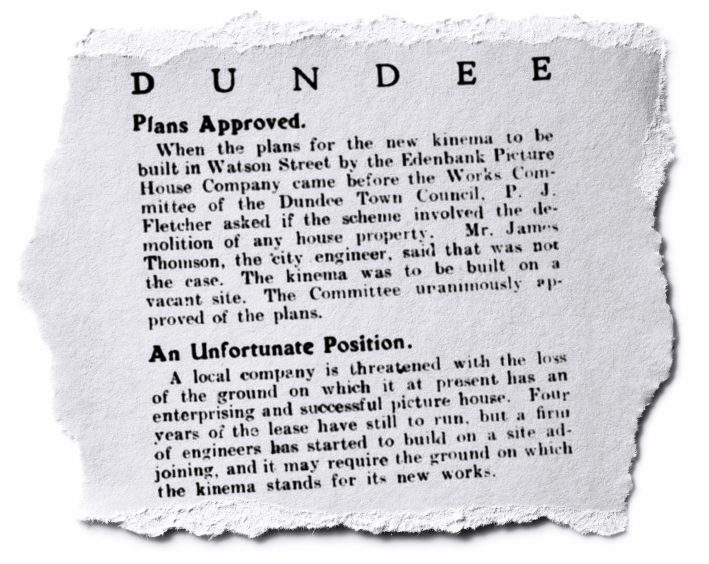

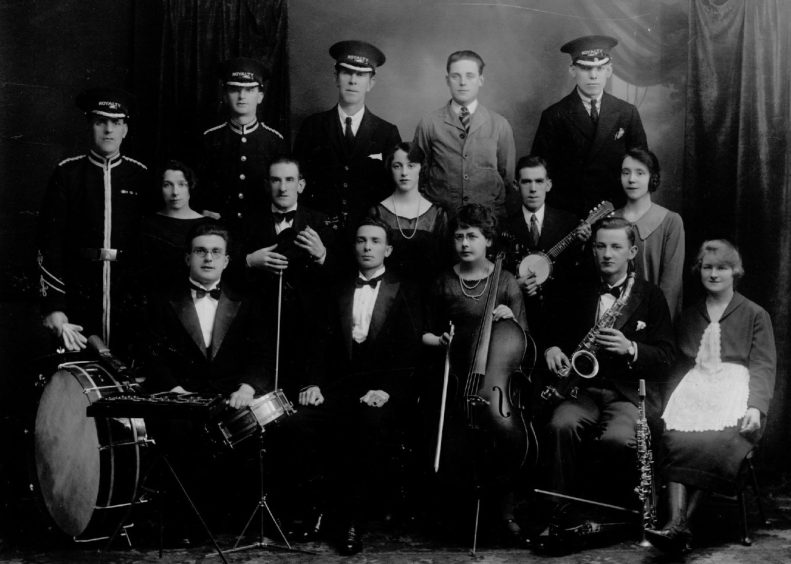
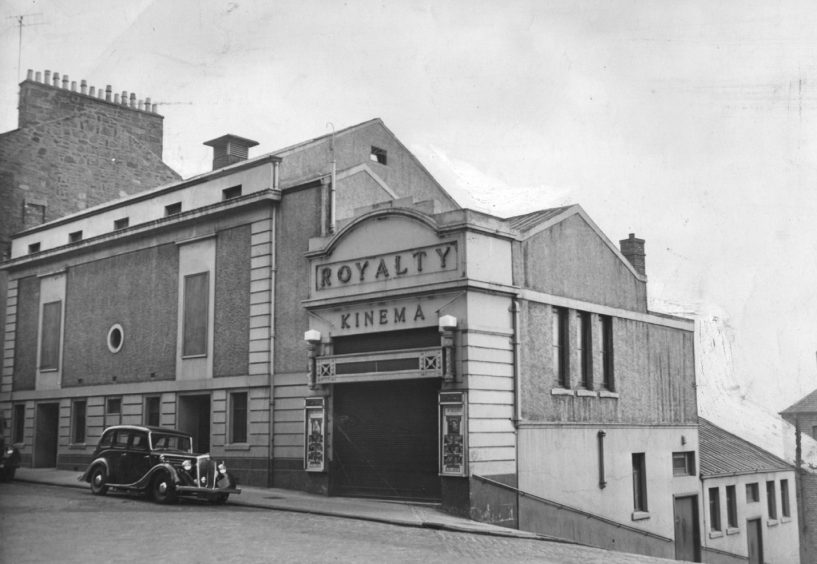
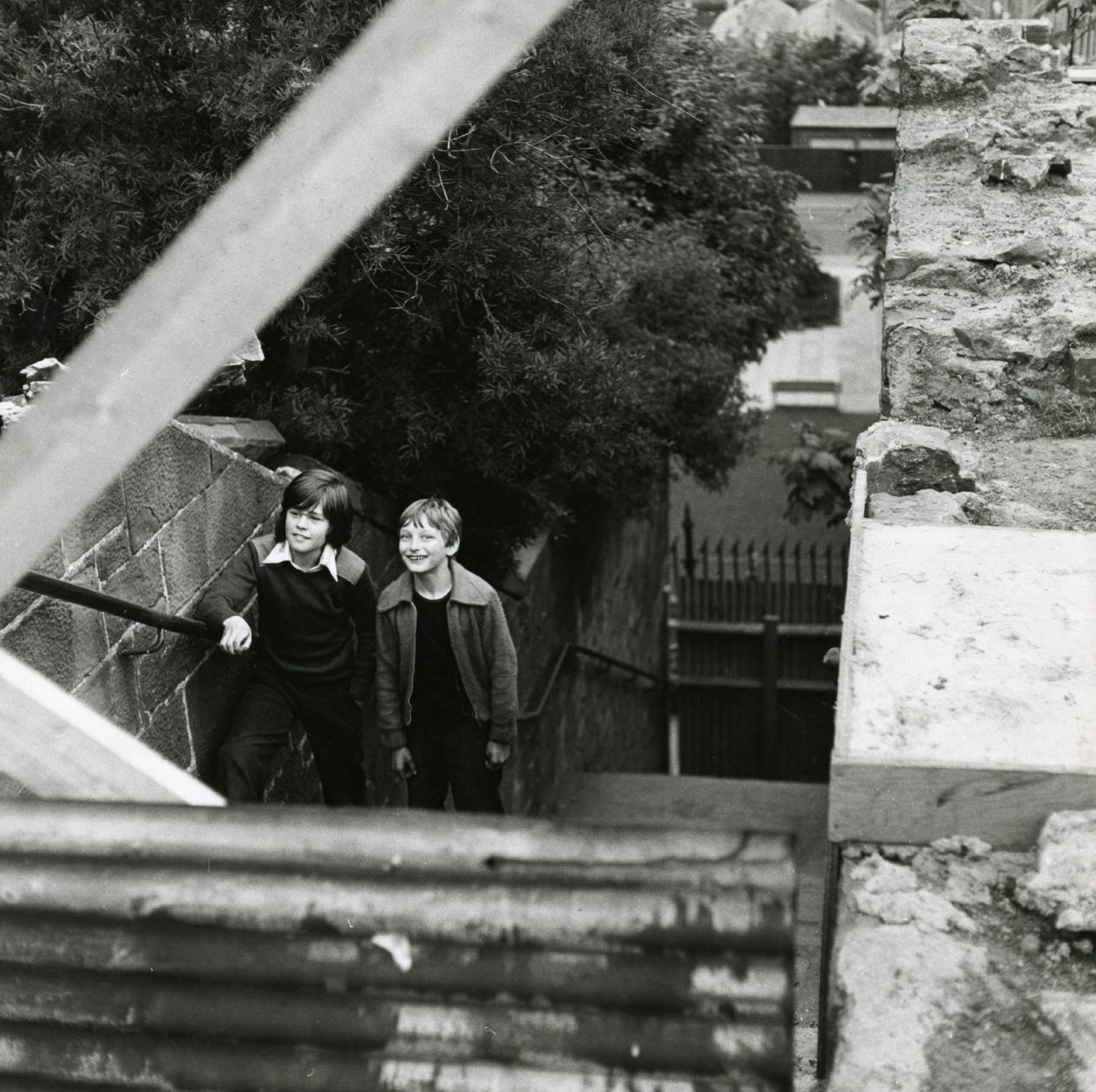
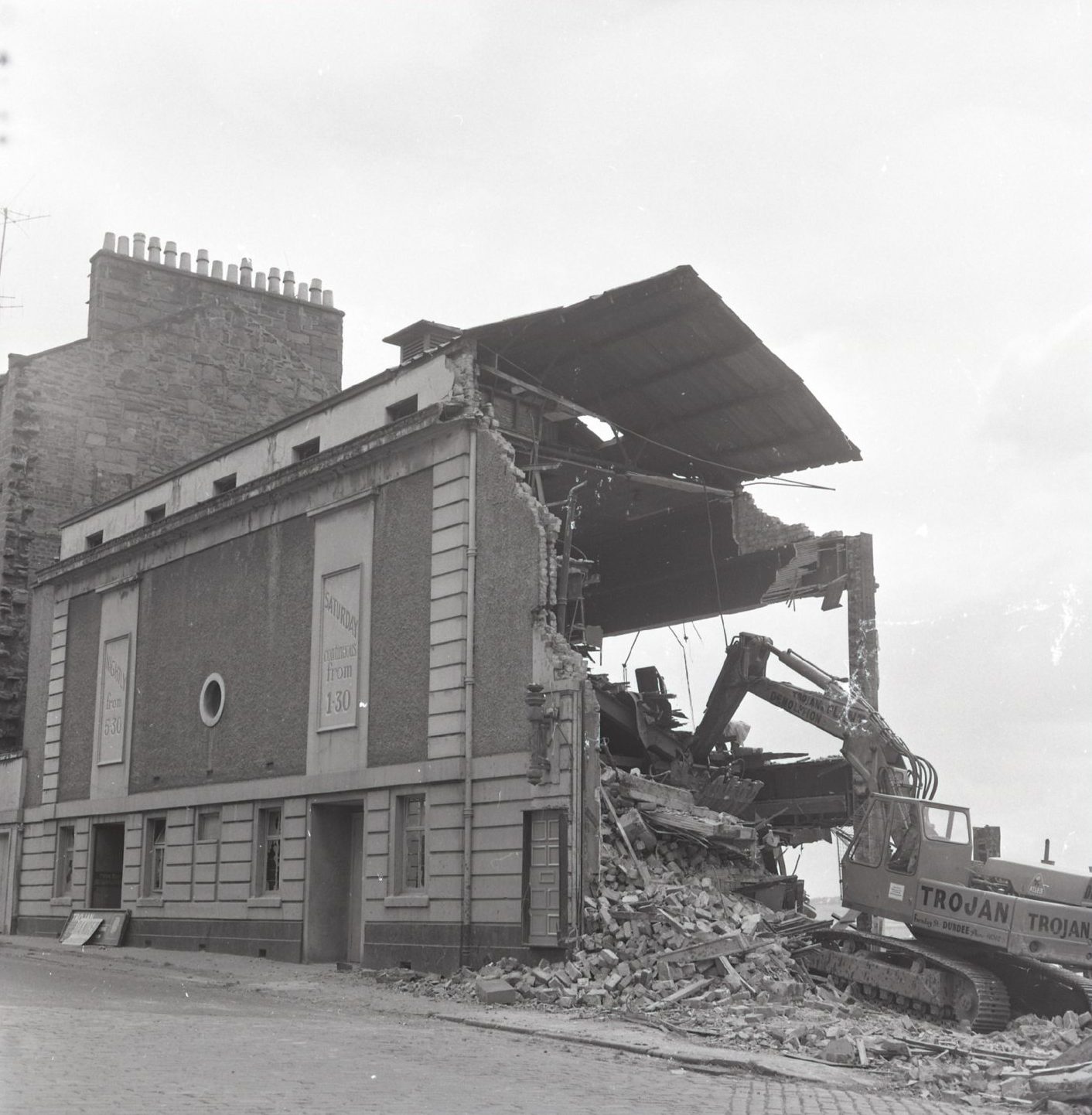
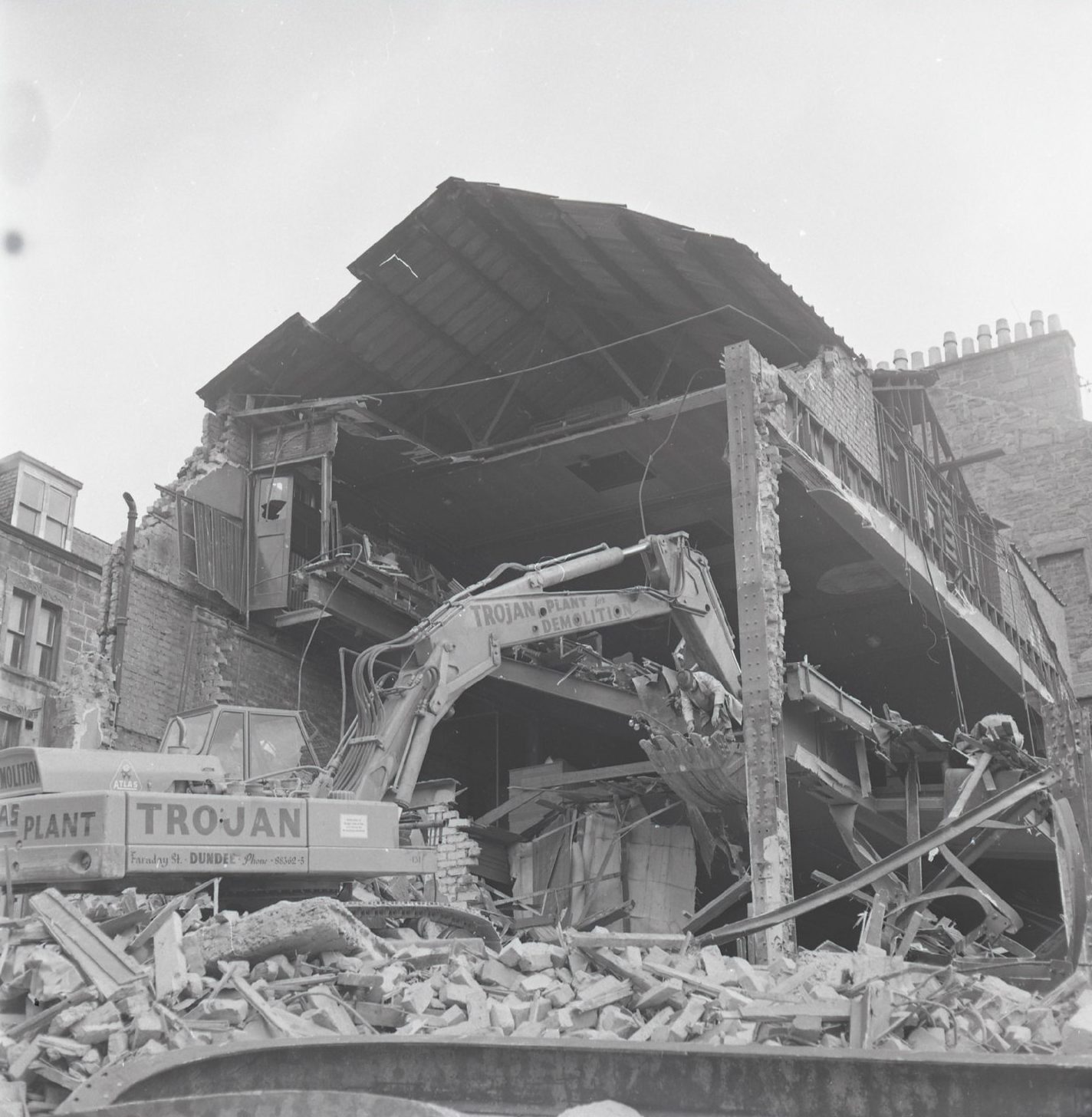
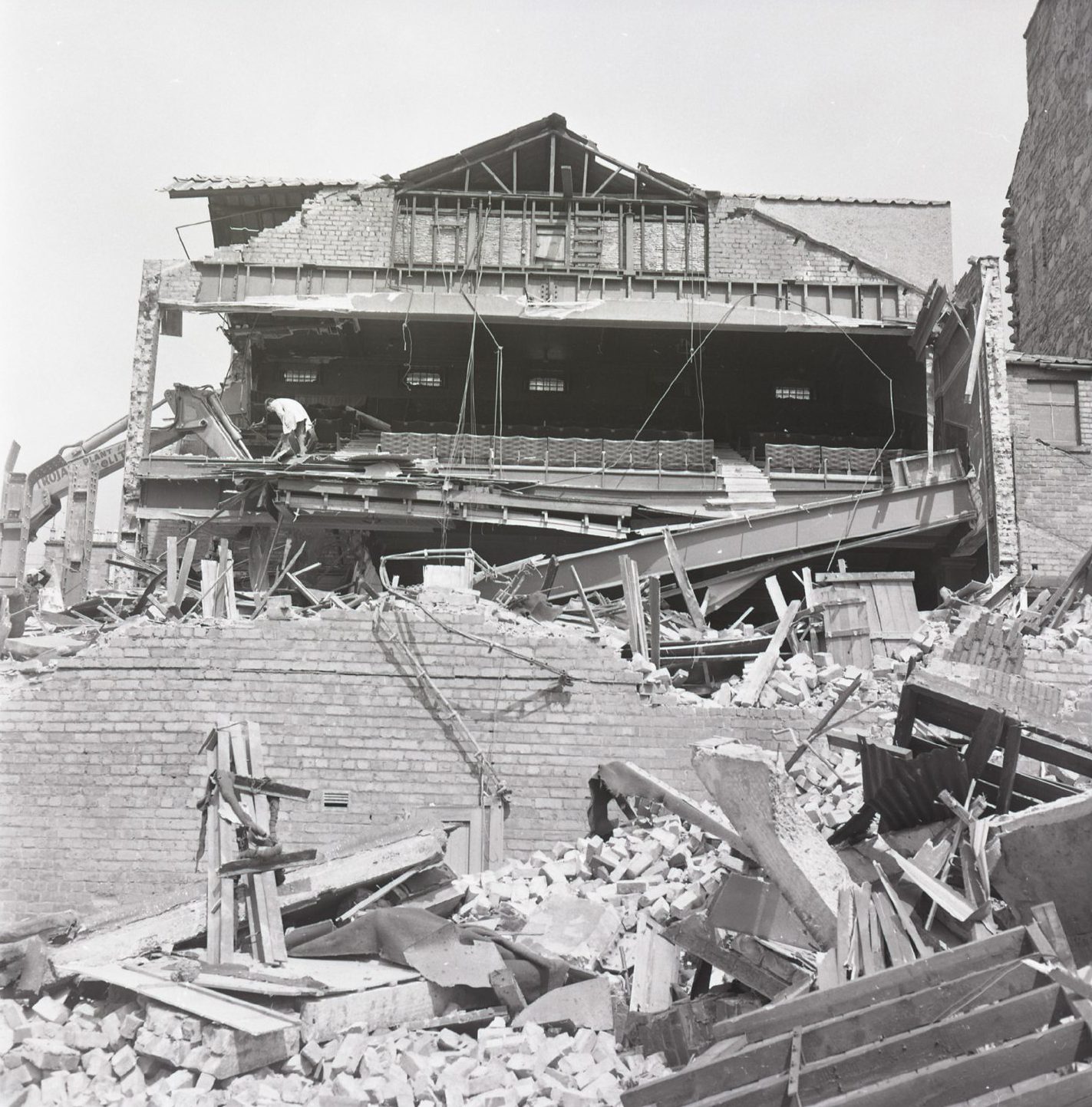
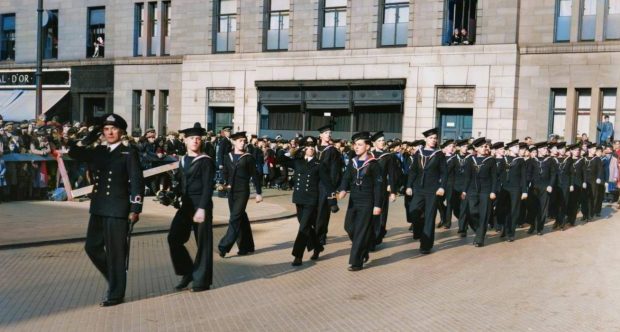
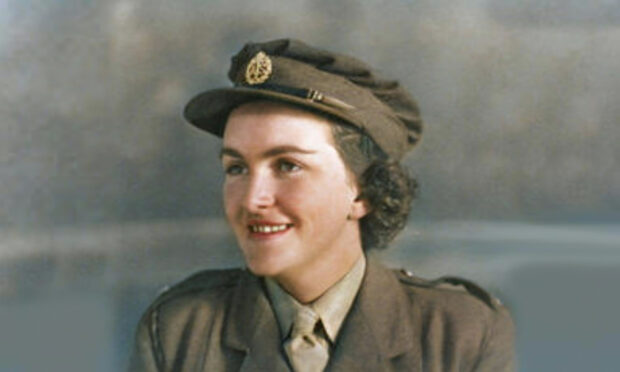
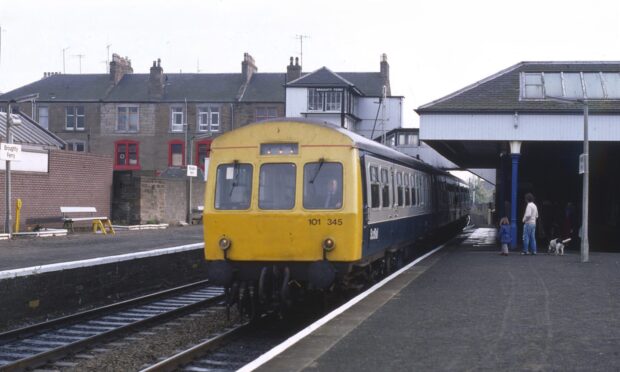
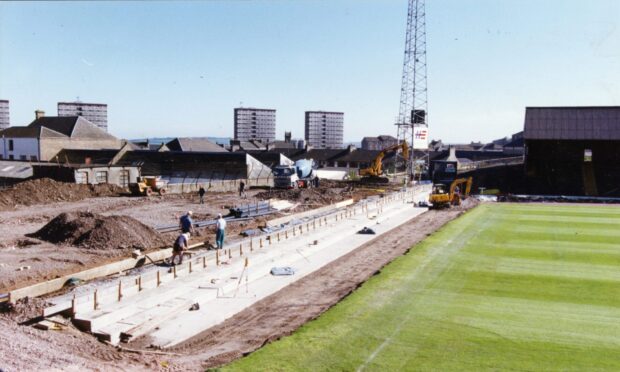
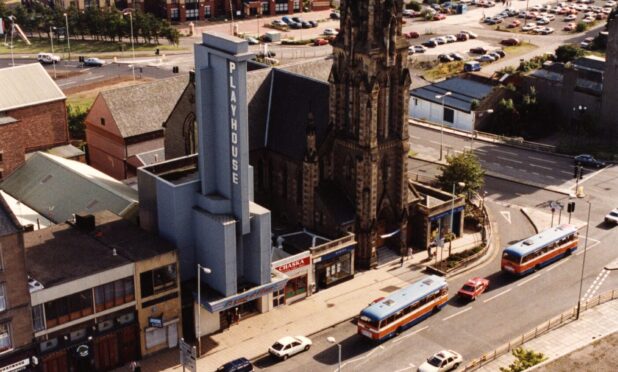
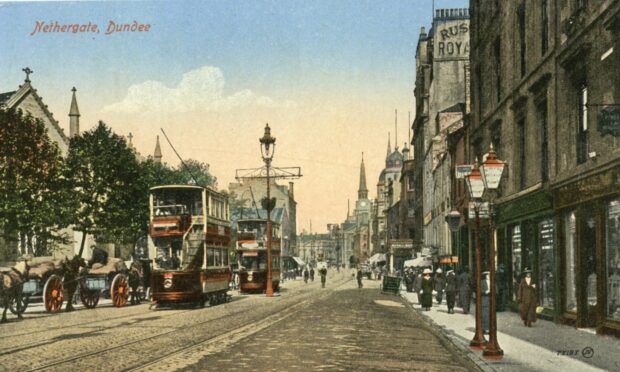
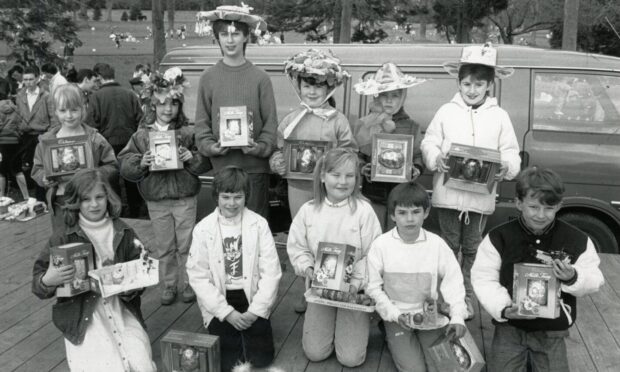
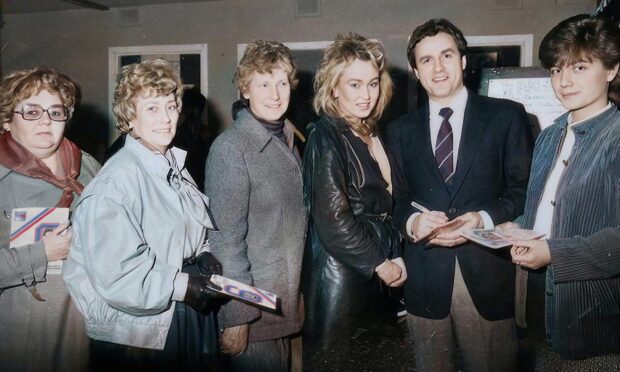
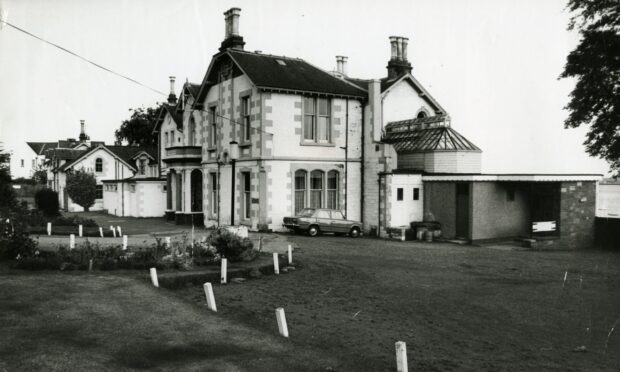
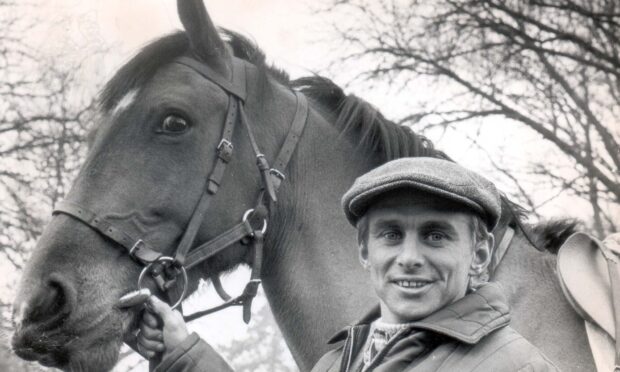
Conversation